Israel's defense industry. 7 part
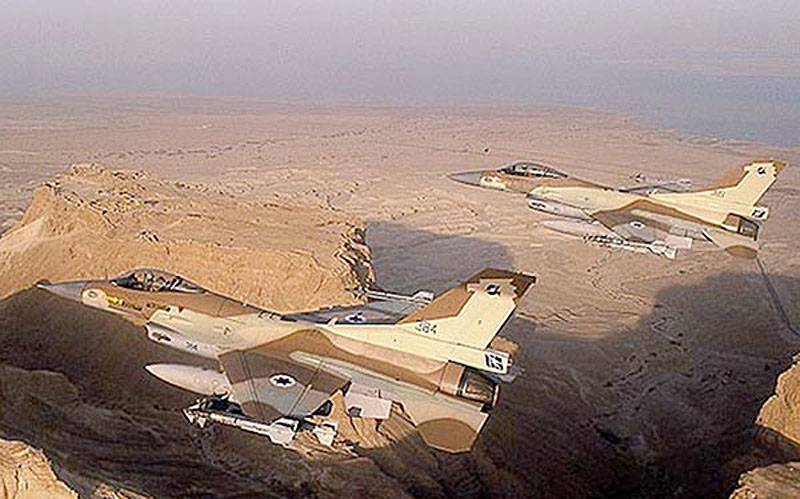
F-16I fighters (nicknamed Viper - Viper) by Lockheed Martin were the basis of the Israeli Air Force for several years, but the active work of companies such as IAI, Rafael and Elbit allowed the Israeli Viper to be among the most advanced fighters in the world
Electronics
By developing its own industrial potential, Israel has de facto reduced the number of systems that could fall under the embargo of foreign countries. And therefore, Israel has good systems in almost every sector of the electronic industry (radar stations for air defense are described in the air defense section of this series of articles).
The key players in this area are undoubtedly Elbit, Elisra and Elta, although, as will be noted later, Rafael also has something to say in the radio business. Smaller companies, discussed below, are also entering the market with interesting systems. The part devoted to electronics, which examines the latest achievements of these companies, is divided into sections: radio stations, electronic warfare, battle management and operational control systems and silencers.
Radio stations
PNR1000 - ELBIT
Command and control systems (see below), perhaps, is nothing without communication, and here Elbit Systems is at the right time offering a small, light, full-duplex ultra-short-wave personal radio station PNR-1000 Personal Net Radio. There are no restrictions on the number of listeners in the network of the radio station PNR-1000, which can accept three speakers at any time. The radio can handle voice and data transmissions; Last at 320 kbps. You can download either the proprietary Elbit communication protocols or the protocols used by the customer to the radio station, while the radio station itself coordinates its work on the network. Elbit says that the range of PNR-1000 is about twice as long as the range of its already obsolete radio station CNR-9000. The transmission range is up to two kilometers in open space, from 700 meters to one kilometer in urban environments and to 500 meters in the jungle.
Elbit's Military-IP Radio (MIPR) radio station is a mobile / portable transceiver of the meter band with data rates up to 4 Mbps. Typically used as a base transceiver, MIPR can also be used at brigade level. The proprietary Elbit protocols or customer communication protocols are downloaded to the radio station. Finally, this company's radio station THF-8000HF has a data rate of 92 kbps. It is available in three configurations: portable, portable or stationary. The portable version weighs up to 4 kg, its power is 25 W, although it increases in a portable version to 125 W.
TAC-4G LTE - ELBIT
Other Elbit communications innovations include the TAC-4G LTE cellular network, built around an encrypted cellular network and operated from a land vehicle. Such a network can provide the deployed troops with a regular cellular network, which can be used by ordinary cellular phones, but in encryption mode. Once connected to the network, these cell phones can be used to view photos and videos, transfer data, and perform regular voice conversations. When deploying multiple ground-based machines to manage the network, some degree of redundancy is created, due to which the network will continue to work even if one of the machines stops working.
MP-DF-100 - ELISRA
Elbit Systems is the parent company for the Elisra Group, which manufactures a number of specialized electronic platforms, such as the MP-DF-100 portable tactical radio intelligence system. The MP-DF-100 system operates in the 25-3000 MHz band and can be used both in motion and stationary. This radio intelligence system allows soldiers to classify and locate transmitters. When used in a stationary position, the MP-DF-100 can build a tactical map of local emitters and their frequencies. Elisra is currently working on the next version of Comint / DF. It will have a smaller receiver and a hot-swappable battery. Both MP-DF-100 and Comint / DF can transmit intelligence data across the entire tactical network of radio stations or satellite communications.
RAVNET-300 - RAFAEL
With an excellent reputation in the rocket business, the Israeli company Rafael Advanced Defense systems also specializes in military communications. For example, it produces a dual-band (VHF / UHF) radio station Ravnet-300 installed in aircraft, which is currently in service with the Israeli Air Force and Navy; on the navy It is used to transmit ship-to-air data. The Ravnet-300 data transfer rate is up to approximately 300 kbit / s, it provides high-quality voice data with low latency, including full-duplex communication over a range of up to 180 nautical miles (333 km). In addition, compatibility with the Mil-Std-1553 protocol allows the Ravnet-300 to be installed on various airborne platforms that have this data bus.
Despite the relatively short life (5-6 years), the Ravnet-300 will be replaced in the coming years with a new one. aviation a Rafael production radio station called NetCore (also known as BNET-AR). Being in the early stages of its development, NetCore can already provide three-channel communications in the form of VHF / UHF and satellite communications. The NetCore base unit has a small form factor - smaller than the Ravnet-300 model. The company says that it can import communication protocols compatible with NATO standards for sharing with the Link-16 system (a type of military tactical real-time data exchange network); at the same time, communication protocols must be compatible with communication protocols developed for the American program Joint Tactical Radio System (JTRS - reprogrammable radio stations using a single communication architecture). In terms of benefits, NetCore is superior to the Ravnet-300 in terms of data transfer rate, offering 1,5 Mbps. The radio station provides for the possibility of future software updates, in addition, it implements special features that can control and coordinate the operation of the entire network.
With regard to operational management, the GlobalLink over-the-air operational management network also developed by Rafael is built into NetCore. GlobalLink can transmit voice, video and data between aircraft and between aircraft and ground. The network can conduct video sharing, provide information about the situation, such as information about the Allied forces, and act as a warning system for dangerous convergence. The company says that besides the main tasks, the GlobalLink network can perform additional functions, in particular, plan tasks for helicopters. As expected, NetCore will go into service with the Israeli Air Force over the coming years and will eventually be installed on all airborne platforms. When commissioning a NetCore radio station in the Israeli Air Force, there will be a parallel implementation of the GlobalLink network.
BNET - RAFAEL
BNET is a family of broadband programmable radio stations that includes the BNET-AR air system (described above), a BNET-V transportable, and a handheld BNET-HH. The BNET-HH model provides data transmission speed of two megabits per second in one 1,25 MHz channel, and the BNET-V model has a speed of up to 10 Mbps in all non-adjacent independent 1,25 MHz channels. Although the radio station is designed primarily for data processing, it can also transmit voice data using the IP protocol and work in air and ground communication channels. The company calls BNET-V / HH the “Israeli version of JTRS” because it can import communication protocols of the NATO standard. Rafael supplies both of these radios to the Israeli armed forces. It is also negotiating with two non-NATO European countries on the procurement of these systems. From an ergonomic point of view, the BNET-HH radio station is not so heavy, it weighs only 1,2 kg, including the battery. The BNET-V variant weighs a bit more, around 7 kg. It is worth noting that BNET-V can also be used in the aviation configuration. Both radios are compatible with the architecture of programmable communication systems, which was developed as part of the American JTRS program in order to define specific standards to improve the portability of communication protocols to programmable radio stations. The BNET-V radio station has a frequency range of 20-2000 MHz, which can be extended to S-band 2000-4000 MHz. Similarly, the range of the BNET-HH radio station can be extended to the L-band (1000-2000 MHz) and S-band at the request of the buyer. The output power of radio stations 5 W (BNET-HH) and 50 W (BNET-V).
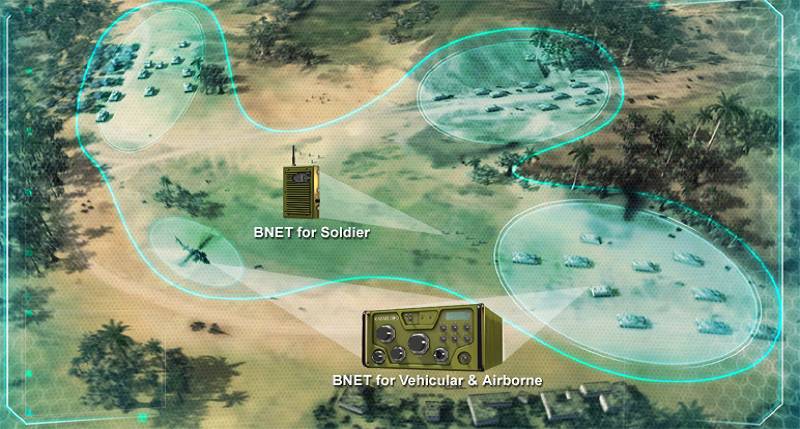
BNET is a family of broadband programmable radio stations, created by RAFAEL
PRC-710HH from Elbit Systems, promoted under the Tadiran brand, is a lightweight, hand-held VHF radio station. An additional amplifier provides power up to 20 watts. The company claims that it is the easiest hand-held radio station with frequency hopping on the market
SOURCE OF SOUND
Silence can be gold, but not on the battlefield. The company Source of Sound sells its in-channel noise reduction systems worldwide. The soldiers must hear, they need to be in control of the combat situation, but at the same time they must be protected from the loud sounds of the battlefield. In order to imagine the cost of battle noise in monetary terms, the company voiced the following figure: every year, the US government spends more than 1,2 a billion dollars in compensation related to hearing loss.
Company Source of Sound, specializing in noise reduction systems, offers the MiniBlackBox and its newer version of Clarus on the market. These systems have passed advanced tests and tests. The Israeli army has ordered several hundred of these systems and has already received them. Each ear insert combines a small microphone for receiving ambient noise and the in-ear phone itself. They are connected to a control unit that holds two tangents for two radio stations or two channels plus a volume wheel to control the level of external noise and communication sessions. Headphones come in standard earbuds, which the company offers in five different sizes. The MiniBlackBox and Clarus systems constantly monitor environmental noise levels and if a sudden explosion or sound is heard, the headphones automatically cut off loud noise to protect the wearer's ear. AAA systems can operate on batteries for more than 45 hours, although it is possible to work from a soldier’s radio station.
MAXTECH NETWORKS
Much has been done by the growing computer industry in Israel. The experience and knowledge developed in the civilian sector was created and accumulated thanks to the investments that the country, starting from the day of its foundation in 1948, spared no effort to enter defense technologies. Companies such as MaxTech Networks supply both tactical radio stations and communication protocols. As for communication protocols, it develops software for well-known companies, for example, Selex and Thales, where it is loaded into the transceivers of these companies. The company developed its new UHF radio station MaxTech SDR UHF, which was tested by one of its customers. The radio station has built-in analog FM communication protocols that can be included in civilian radio networks used by emergency services, such as MES, at the same time, it allows you to organize networks with narrowband and broadband communication channels. MaxTech has completed the delivery of its new system. In order to illustrate how its products can be combined with existing communication networks, MaxTech told that it is working on a project in the Far East, in which it is planned to equip it with radio stations of remote police stations located in isolated border areas. Police will use MaxTech radio stations, whose traffic will be transmitted through a network protocol that will connect these radio stations with satellite communications systems and existing cellular networks so that you can communicate with command centers at the local and national levels.
UTC
Implementing communication under water has never been easy. Although the sound in the water spreads faster, people did not get the ability to speak and understand under the water and, apparently, they will not be able to do this for the next few thousand years. The UTC Underwater Digital Interface (UDI) system partially solves this problem. It is an acoustic modem for text messaging between swimmers under water. Using ultrasonic waves, the system provides full digital communication, transmission and reception using a single antenna. Each device can send 14 pre-set messages, while they can be added to the device from a laptop computer via a USB cable. After sending the message to other recipients, the sender receives confirmation that the message has been delivered. In order to help swimmers in an emergency, the UDI system, which comes in the form of a worn display on the wrist, has an SOS button. When you click on it, it conveys the location of the swimmer and the depth at which he is located. Each wrist display has a range of up to one kilometer; with prolonged use of the battery lasts for 10 hours. The product was tested at depths up to 100 meters. Acoustic Modem can connect up to 14 swimmers to each network.
Electronic warfare
SEWS-DV
Given the company's experience in the field of defense electronics, there is nothing surprising in the fact that Rafael offers products in the field of electronic warfare (EW). For example, SEBS-DV, the maritime EW system, covers the 0,2-40 GHz radar band of the electromagnetic spectrum. SEWS-DV is in service with the Israeli Navy. It can be installed on submarines, surface ships, as well as on coastal aircraft patrol aircraft. Although the company does not provide specific details, it declares that SEWS-DV has an extended threat library, although it is empty for sale and the customer fills it as the SEWS-DV system is used.
The allocation of frequencies in the system SEWS-DV makes an important contribution to the protection of the ship. Anti-ship missiles, as a rule, use millimeter-wave guidance radars in the Ka-band. A feature of the flight path of such missiles is that they tend to fly as close as possible to the surface in order to prevent detection, which is also facilitated by their relatively small physical dimensions. Consequently, such electronic systems, such as SEWS-DV, can relatively easily detect the unmasking radiation of a rocket, after which the ship can take action to evade by aggressive maneuvering, use counteraction systems, or launch a kinetic attack.
SPS-65 (V)
Elbit Systems also does not shy away from electronic warfare systems. A few years ago, it announced its new products, including the SPS-65(V)5 electronic intelligence and jamming platform. According to the company, the SPS-65(V)5 platform offers a wide range of capabilities and is quite competitive in size, weight and power consumption. The frequencies covered by the SPS-65(V)5 range from the lower band (approximately 64-88 MHz) to 18 GHz. For signals, the system can detect conventional pulse repetition rates, continuous waves, and high pulse repetition rates. In addition, the SPS-65(V)5 provides a laser warning function for multiband lasers, single or multiple pulsed lasers. The SPS-65(V)5 system can be taken on board by various types of air platforms, including Drones, which are compatible with MIL-STD-1553 data bus as well as RS422 and RS232LAN technical standards. Elbit Systems manufactures the SPS-65 system in several versions, including (V)1, (V)2, (V)3 and (V)5. The main differences between these options are the consistent reduction in the number of electronic units. For example, the "brains" of the SPS-65 are housed in one quick-change unit, which in turn is connected to eight laser and radar sensors installed in different places on the aircraft, which allows for 360° all-aspect coverage. In the medium term, Elbit intends to develop a 40 GHz extension, which will require the installation of more antennas on the aircraft. Elbit Systems has several customers for the SPS-65(V)5 system who are going to equip their manned platforms. In addition, the company hopes to receive an order from the Israeli armed forces for SPS-65 (V) 5 systems for installation on drones.
Ship digital system EW company Rafael SEWS-DV. Its operating frequency range is 0,5-40 GHz, which allows it to detect millimeter-range radars of anti-ship missiles; in addition, it is capable of performing electronic suppression functions
SKYFIX
The SPS-65 (V) is joined by the SkyFix radio reconnaissance and radio direction finding system, which is an electronic warfare equipment installed on drones. The SkyFix system consists of a family of products including SkyFix Comint/DF, SkyFix/G which can jam tactical networks and SkyFix-Cellular to jam cell phones. All SkyFix products can search the full range of targets, monitor and classify selected frequencies, and perform jamming. The SkyFix system is installed on drone Hermes-450, as well as on the larger Hermes-900.
SkyFix system in combination with SkyJam
Battlefield control and operational control
DAP - ELBIT SYSTEMS
Elbit Systems, based in the city of Haifa, has staked out the leading supplier of military electronics since its founding in 1967. She is currently leading the development of combat management software for the Israeli Army’s DAP (Digital Army Program), which runs on the Tiger / Torc2h broadband network. The DAP system, which went into operation in the 2008-2009 years, provides a battle management system for all branches of the military, including armored vehicles, artillery, engineering units, infantry, reconnaissance and logistics units. It connects all command echelons, starting at the corps level and down to the individual soldier.
The DAP program is built around a basic software package that adapts to the command echelon and the branch of troops where it is operated. For several years, Elbit has been working on algorithms that can “wipe out” the amount of information that comes from sensors at different levels of command, so that users do not “drown” in the data. This will be implemented in the DAP system at the expense of new software, which will be widely used by the Israeli army in the next couple of years.
Operational Management - MPREST
MPrest also specializes in operational management software (DU). She was actively involved in the development of operational control architecture for the Iron Dome air defense system. The strength of the company lies in the fact that it develops a typical infrastructure for the OS system, which can then be sold to customers and adapted to their requirements. For example, the Israeli Air Force also adapted a similar infrastructure. MPrest says it can install an OS system in less than 24 hours using its typical function blocks. In the civil sector, MPrest is developing an OS system for Israeli electrical companies. She will be able to connect up to 300 sites, both habitable and deserted. The Mprest OS software, based on Windows OS, has been used in a wide variety of applications, from ground control stations to unmanned aerial vehicles to border security systems.
Silencers
PHANTOM TECHNOLOGIES
Israel knows very well how deadly and destructive cars filled with explosives can be. Not surprisingly, Israeli companies, such as Phantom Technologies, produce analogue and digital cell phone jammers and other equipment to combat roadside land mines and explosives machines. This equipment can be in the form of wearable and mobile tactical silencers, power amplifiers, as well as jamming systems for large areas, such as prisons, where the use of cell phones is prohibited. For mobile security, Phantom Technologies supplies silencers for transport convoys in the form of vehicle-mounted systems and concealed portable devices.
SKYFIX - ELBIT
The SkyFix system is an on-board EW equipment installed on drones (already mentioned earlier regarding installation on Hermes-450 and Hermes-900). In fact, it consists of a family that includes SkyFix Comint / DF and SkyFix / G, as well as a system for jamming SkyFix – Cellular mobile communications.
ATALD - IMI
As for survivability and protection systems, IMI has achieved some success with its Atald airborne target, since it was adopted by the US Navy. The system can be configured with different equipment - radio frequency, infrared or combined, - simulating modern targets in order to “overload” the defensive systems of the enemy vessel. Atald can generate various false targets, simulate the effective reflection area and target speed, and can also be programmed for certain characteristics of their flight. The carrier has a length of 2,34 meters, wingspan of 1,55 meters, weighs 170 kg and can reach speeds of up to 260 m / s due to its turbocharged engine weighing 77 kg. When flying at low altitudes to 6800 meters, the sham goal has a flight time of 18 minutes, which increases to 35 minutes when flying at altitudes to 9000 meters.
Elbit Systems is leading the Israeli Army Combat Management (DAP) automation program, which provides combat management software across the Tiger / Torch broadband network for all military branches
The stabilized optoelectronic system (Minipop in the photo) is a complex, close-packed combination of electronics and high-precision mechanics.
Stabilized optoelectronic systems
This area is mainly divided between the companies Elbit, IAI, Controp, Top I Vision and Esc Baz, which produce many systems, although Rafael here also has its own Toplite system, which, according to the company, has set a unique record, since it has been installed “on every ship US Navy.
Initially, more focused on air applications, stabilized "balloons" as they are sometimes called, are now becoming an integral part of remotely controlled and robotic land and sea systems. In ground-based applications, they are highly valued for the possibility of obtaining high-quality images of distant objects, for example, from the top of a telescopic mast. In the marine field, they are absolutely necessary on robotic speedboats.
ELBIT
The Elbit product line includes four main products: Amps, Compass, Dcompass and Microcopass.
The heaviest of them is the Amps 85 kg system, designed for long-range observation of the sea from large aircraft, both manned (usually special planes and coastal strip helicopters) and unmanned (for example, this can be your own drone). Hermes 900 from Elbit). Sensors that are included in it, as a rule, are configured to customer needs (there is already one European customer), but mainly include a CCD camera, an infrared camera and an infrared radiation converter on a CCD matrix. Image analysis is greatly simplified through the use of its own GPS and inertial navigation system, which allow you to perform accurate image binding to the terrain.
Optical species intelligence system or the Compass optical search electronic station with a mass of 38 kg and a diameter of 15 inches is more designed for offshore platforms. Its high-resolution daytime channel uses a widescreen color CCD camera with three fields of view, namely the 0-6 ° x0,45 °, 21,25 ° x16 ° and 25 ° x19 °. The third generation cooled infrared camera is based on the 640x512 matrix. Laser sensors include two channels, one for the eye-safe 154-μm rangefinder, the second for targeting with a 1,064 μm laser, although an emitter with a wavelength of 830 nm compatible with night vision systems can be used.
The Dcompass system, designed for aerial platforms, also has a diameter of 15 inches and is essentially the same configuration, only a CCD camera with a size of 1394xXNNXX pixels and geolocation due to an inertial measurement unit are added. The mass of the ball varies from 1040 to 33 kg.
The 8,2-inch Microcompass optoelectronic system weighs 9 kg and provides 360° azimuth and +30°/-90° elevation coverage. It consists of a CCD camera with magnification, a second-generation 3-5 µm thermal imager with a 640x512 pixel matrix and fields of view of 2.5°x2° and 17.5°x14°, an 830-µm night vision goggle-compatible target illumination device with a range of 10 km and an optional 1,54 µm laser rangefinder with a range of 4 km. As a rule, the system is installed on drones and ground Robots.
The ruler of the popular stabilized optical-electronic systems of the Elbit company: Amps, Compass and Microcompass
Micropop (top) and Minipop are typical members of the IAI Tamam Stabilized Systems family.
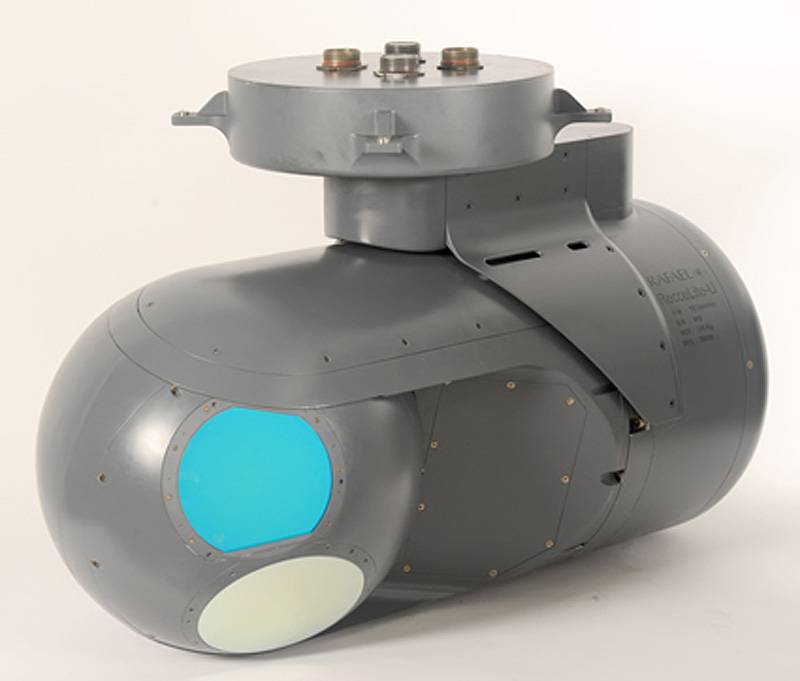
Sales of Recce-U have already reached the 60 mark of units and, based on its capabilities, may ultimately approach the 1300 mark of sold Reccelite systems.
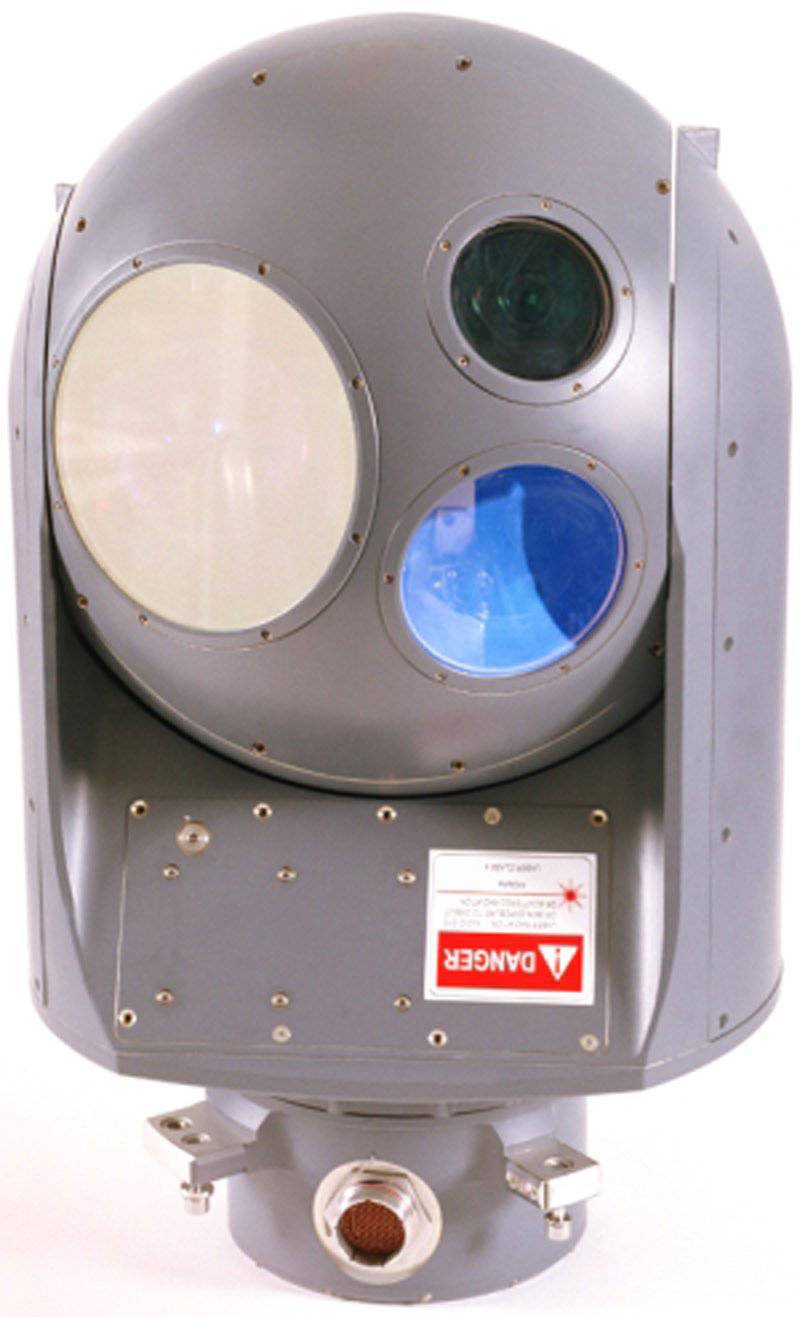
The omnipresent Toplite system is installed on helicopters, airplanes, ships, telescopic masts of ground vehicles
IAI
The IAI division of Tamam specializes in all types of electronic intelligence and navigation systems and it is not surprising that it has developed a complete line of gyro-stabilized optical-electronic systems, starting with the simple Pop 200, the more sophisticated Mosp series and ending with the newest advanced Pop300D-HD systems, which were sold worldwide over 1000 pieces.
The Pop 300D-HD system with a 20 kg mass and an 10,4 inch diameter includes (as can be seen from the notation) the 3-5 μm high resolution thermal imager with an 1280xXNNXX pixel array on indium antimonide. The day channel has nothing to boast, because it is based on a CMOS sensor with a resolution of 1024x1920 pixels. In addition, a dual laser rangefinder (1080 μm and 1,06 μm), an eye-safe laser range finder, an 1,54-nm laser pointer and a video tracking machine are installed.
RAFAEL
Rafael's stabilized Toplite reinforced “ball” with a diameter of 16 inches is designed for a range of air, land and sea applications. The system with higher performance, designated Toplite III, incorporates 3-5 μm thermal imager with 640x480 matrix with 1 ° x0.77 °, 4.4 ° x3.3 ° and 24 ° x18 ° fields. The 59 kg system also contains a day camera (a large selection), a 1,54-μm laser rangefinder and a dual-band 1,06 / 1,57-μm laser pointer-rangefinder.
In the context of sensors that are often installed on UAVs, it is also necessary to mention Rafael Recce-U. The container system is actually a smaller and lighter version of the well-proven Reccelite system installed on fighters or larger aircraft that perform long-range reconnaissance missions; Reccelite itself is a descendant of the previous Litening system.
Shown at an exhibition in Paris in 2009, the Recce-U station can be installed on MALE drones, for example Heron and larger ones; It was ordered by Italy, the Netherlands, Germany, Spain, and exploited in Afghanistan. The system works in conjunction with a stationary or mobile ground station via an SDV-53 data transmission channel with an 250 km range, collects both digital infrared and high-definition “visible” images, can merge and glue them in real time, although some images can be enlarged if necessary. . Gluing is seamless because it runs at the pixel level.
Having similar characteristics (it can identify power lines from a height of 4500 meters), the Recce-U system becomes especially useful when searching for roadside land mines because it can perform highly precise overlay of images, which makes it easy to identify changes in the form of the exposed ground or displaced objects. The Recce-U system passed control tests, during which 144 objects were hidden. For an hour and a half, she found 126 of them.
The flagship product of Controp is a gyro-stabilized platform weighing 22,5 kg with an 3-5 µm thermal imager and a day-time camera, which, among other things, is installed on Navy helicopters and UAVs. Controp was the first company to develop a thermal imaging camera with continuous zoom.
These are small (handle given for scale) and light stabilized optical-electronic systems of the Stamp series were developed by the company Controp. In the center, the D-Stamp system has a CCD camera with x10 magnification with inertial tracking mode with an optional coordinate hold mode. The U-Stamp on the left has an uncooled thermal imager with two fields of view, while the TR-Stamp on the right contains a cooled thermal imager 3-5 μm, a zoom CCD camera and a laser range finder
Among the light stabilized sensors for light drones manufactured by Top I Vision, there is a day camera weighing 950 grams Lev 2 (top) and Lev 6 weighing 1,5 kg, to which an uncooled thermal imager is added
CONTROP
Controp is known primarily as a supplier of small, stabilized optoelectronic systems for small and light UAVs. Even numerous light drones produced in other countries are equipped with one or another model of the Stamp series.
However, a company of 210 people also manufactures larger and more powerful stabilized stations for helicopters (for example, DSP-1), offshore platforms and vehicles of all types, as well as powerful thermal imaging cameras (including the stabilized Spider system for balloons with a range of 15 km), automatic intrusion detection systems and stabilized antenna supports. The 3 Generation Fox thermal imager with 320x256 matrix installed on the most unexpected systems (including the Tamam Mops and Controp DSP-1) features automatic gain control and image enhancement function. Currently, exports account for 84% of Controp's business, a figure that 15 years ago was only 3%.
One of the newest AVIV-LR systems from Esc Baz. Based on Layla's uncooled thermal imager, its digital signal processing feature allows you to add a daytime CCD camera. The AVIV-LR system also has an optical zoom 25-225 mm
TOP I VISION
The manufacturer of Top I Vision drones (already mentioned in this series of articles) also produces its own line of stabilized onboard equipment for light, hand-held drones. The two-axis stabilized Lev 2 series systems weigh up to one kilogram. The company also manufactures Lev 4 series systems weighing about 3,5 kg with a CCD camera with x40 magnification; The Lev 6 Dual series with a total weight of 1,5 kg includes a day camera and an uncooled thermal imager.
ESC BAZ
Esc Baz specializes in wired, wireless and portable surveillance systems as well as tactical communication systems for national security and military structures. Its surveillance and monitoring systems include turnkey solutions for perimeter protection, armored vehicle protection and rapidly deployable mobile systems.
Most of the tactical systems from the Esc Baz catalog, including from the category of portable surveillance systems, for example, the remotely operated modular AMI surveillance system, are designed to monitor the battlefield at close, medium, and large distances. Another remote-controlled surveillance system, the Rooster, is distinguished by an electrically-powered panoramic head, which can accept handheld thermal imaging binoculars or other optical-electronic sensors, allowing soldiers to observe without fear of being spotted by snipers. These systems are controlled remotely using Esc Baz's Max and Max II multifunctional monitoring and control systems.
The company's portfolio includes a series of short-range and long-range monitoring and surveillance systems. Currently, Esc Baz mainly focuses on new uncooled long-range systems that can identify a person at a distance of 6 km. One of them, under the designation AVIV-LR, intended for military and militarized structures to perform observation and monitoring tasks, is based on a high-precision panoramic unit and a day / night sensor. The night channel in this system is represented by uncooled Layla thermal imager with digital video signal processing. The camera has a built-in video input for an extra daytime color CCD camera that allows for improved daytime imaging. The system has an optical continuous increase 25-225 mm, two built-in video processor and video stabilization function that allows you to get the highest quality image. When you add a GPS laser rangefinder and a gyrocompass, the AVIV-LR may become a targeting tool. In addition, the system can also be integrated with other systems, such as radars, fencing systems, or maintenance-free ground sensors. When an 25-μm thermal imager with a matrix of 384x288 pixels is embedded, the AVIV-LR device allows you to identify a person to 4100 meters and recognize it to 1300 meters, while the 17-μm thermal imager with the 640X480 matrix increases these figures to 6100 and 1900 meters, respectively.
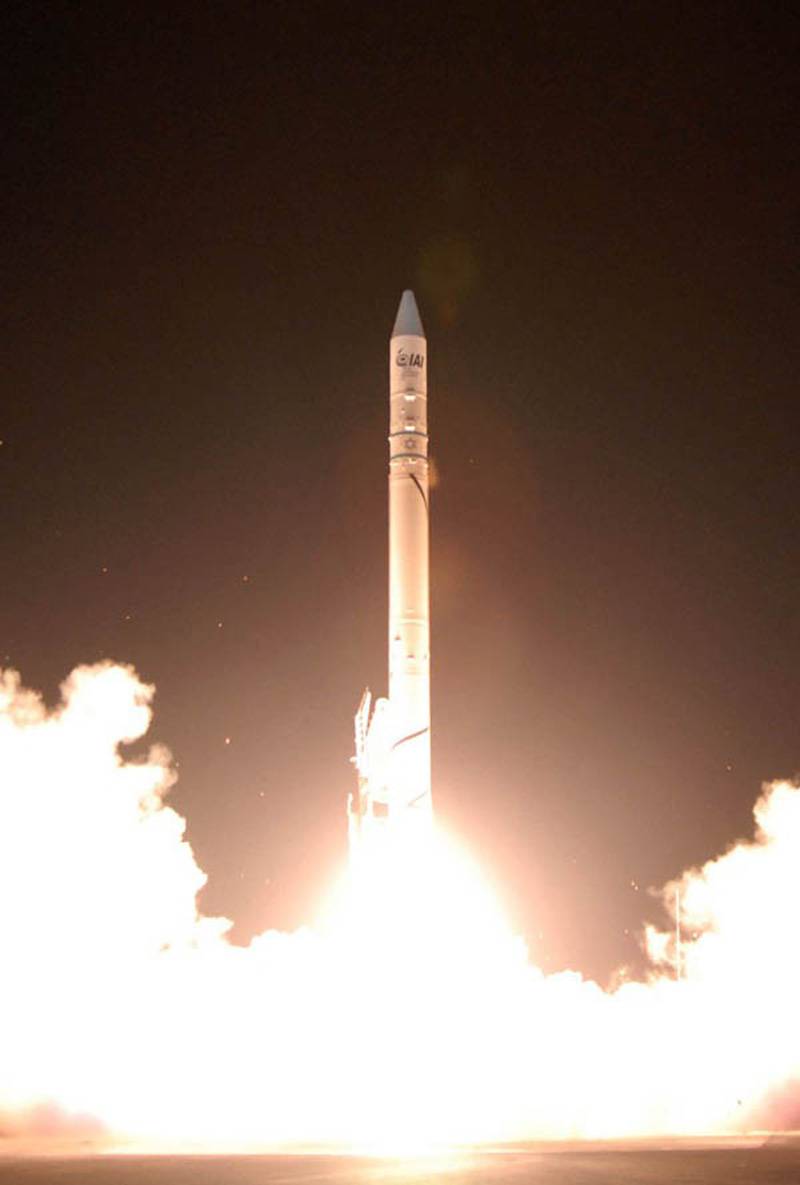
Above IAI's Amos-5 satellite. Several launches of the Shavit rocket (below) from the Palmachim complex have already been carried out. The rocket is able to put into orbit cargo weighing 800 kg
Kosmos
Along with the satellites, the IAI company manufactures launch vehicles of the Shavit series. This rocket was first launched in September 1988. Missile launches are made from the Israeli Air Force Palmachim airbase, located in southern Israel on the Mediterranean coast. The launch is carried out in a westerly direction in order to avoid a missile overflight over the territory of countries neighboring Israel.
The maintenance and strengthening of Israeli air power is the main priority of IAI, although the company is also active in the “final line” - in the space sector. Currently, one of the most successful projects of the company IAI is the satellite Amos-4 - the latest at the moment in a series of communication satellites Amos. This satellite weighs about 4000 kg, and its power is 4100 watts. Amos-4 was launched into geostationary orbit in August 2013 of the year to provide communication coverage for Southeast Asia and is still flying in orbit. IAI’s Amos-5 satellite, launched in December 2011, was designed to provide communications services over Africa, the Middle East and Europe, but at the end of 2015, communications were lost with it. The launch of the next Amos-6 satellite is to be carried out in 2016 year. It will weigh about 4500 kg and will be equipped with 40 transponders (repeaters). It is expected that this satellite will replace the outdated Amos-2, launched in the 2003 year. It will provide communication services over the Middle East, Europe and the East Coast of North America, including television, radio and the Internet. It is possible that Amos-6 will be followed by Amos-7, although the development of this satellite has not yet begun.
Along with the Amos family of communications satellites, IAI developed a new-generation reconnaissance satellite, OptSat-3000. With a weight of 400 kg and a planned service life of about six years, OptSat-3000 will provide high-resolution panoramic and multispectral images. It is expected to launch this year. If this does not happen, the project will be closed. For radar surveillance, IAI has created a 24-hour surveillance satellite TecSAR with a synthetic aperture radar that performs imagery in four modes. It was launched in the 2008 year and is still in orbit. Images received by TecSAR are transmitted to Earth via an X-band data transmission channel.
A series of articles "Israel's defense industry" completed.
Materials used:
www.mod.gov.il
www.idf.il
www.iai.co.il
www.elta.co.il
www.rafael.co.il
www.imi-israel.com
www.aeronautics-sys.com
www.camero-tech.com
www.controp.com
www.elbitsystems.com
www.elisra.com
www.elta.co.il
www.escbaz.com
www.g-nius.co.il
www.hatehof.co.il
www.robo-team.com
www.topivision.com
www.star-ds.com
www.sos.co.il
www.saymar.co.il
www.wikipedia.org
en.wikipedia.org
- Alex Alexeev
- Israel's defense industry. 1 part
Israel's defense industry. 2 part
Israel's defense industry. 3 part
Israel's defense industry. 4 part
Israel's defense industry. 5 part
Israel's defense industry. 6 part
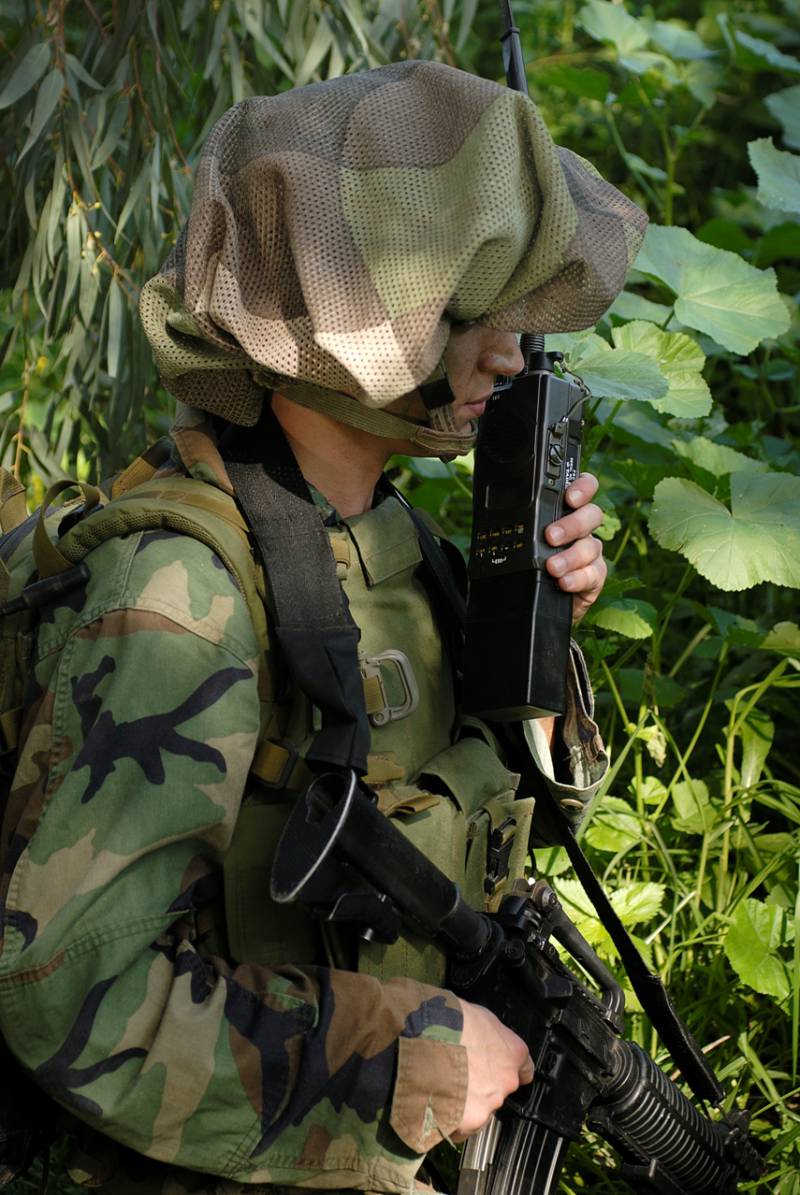
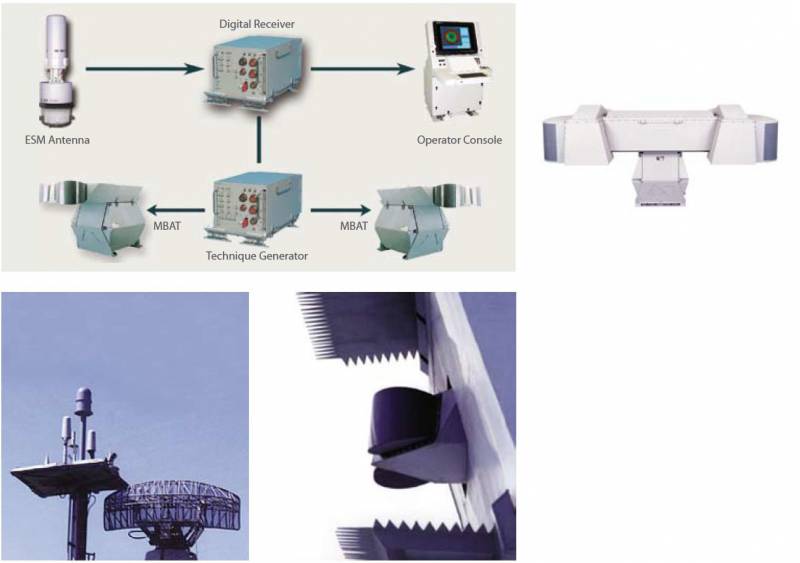
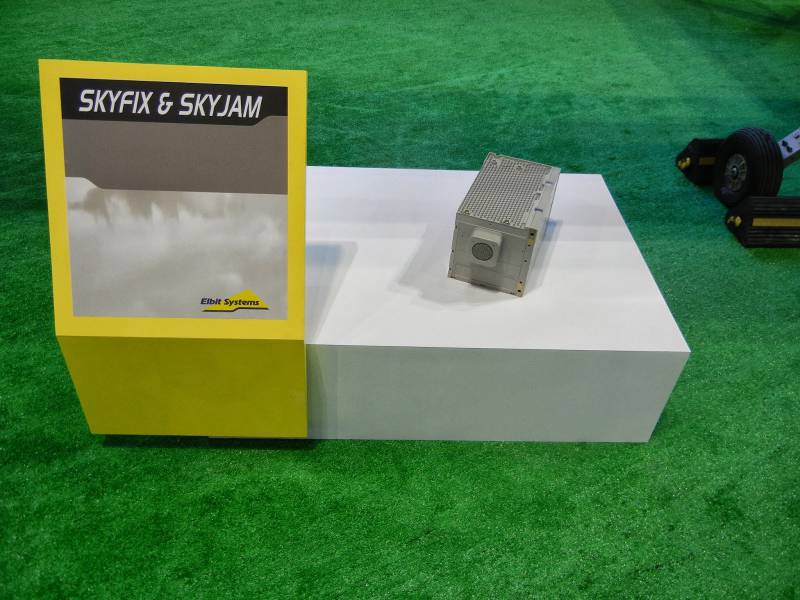

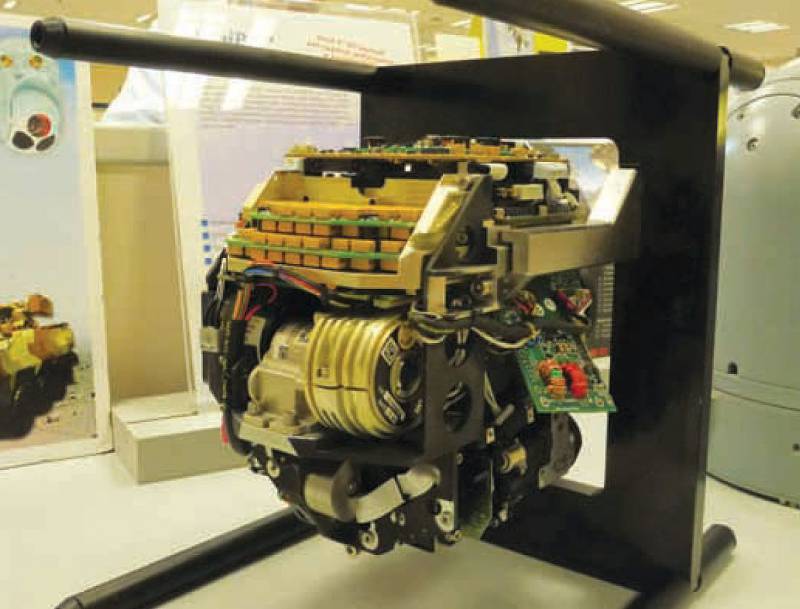
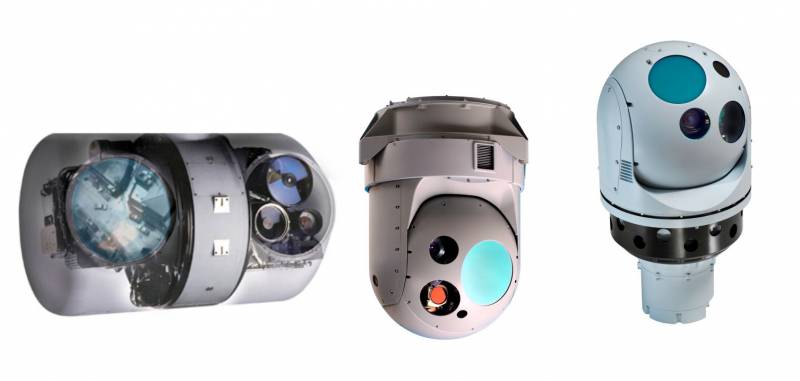
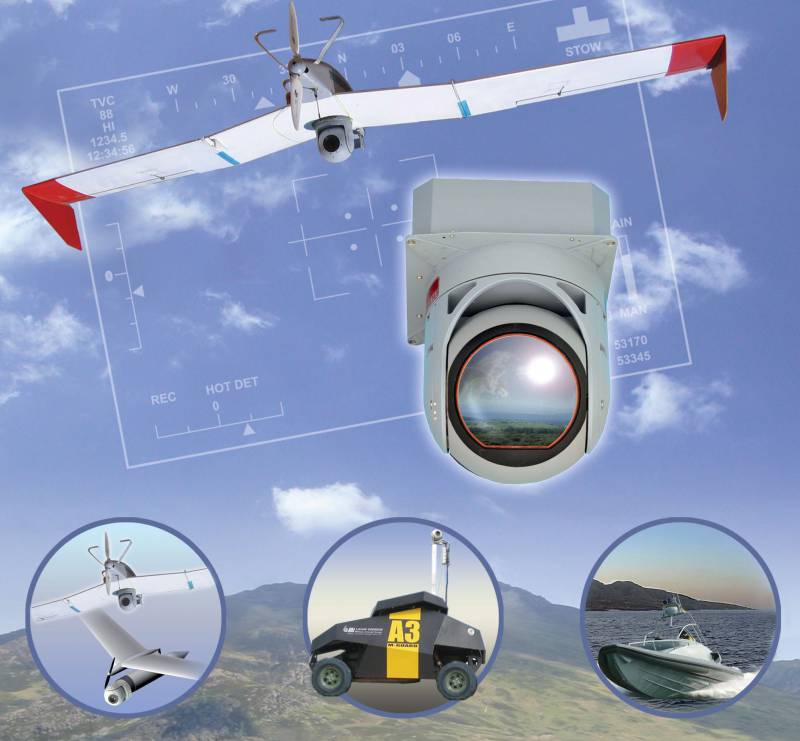
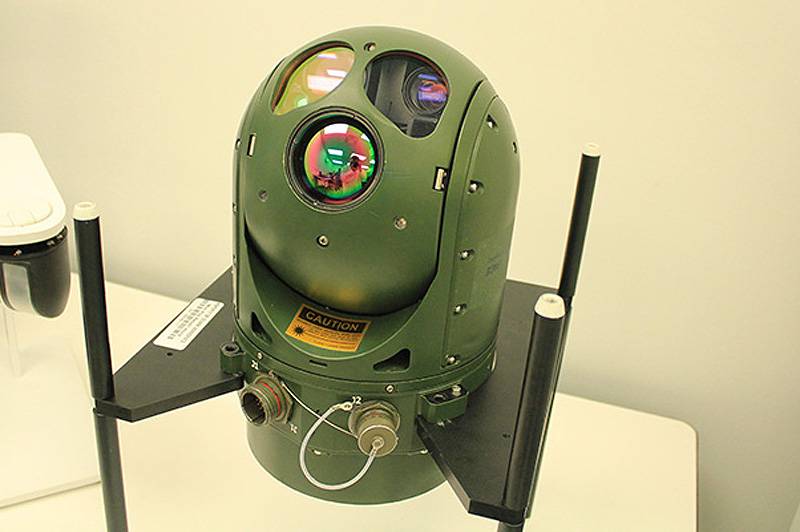
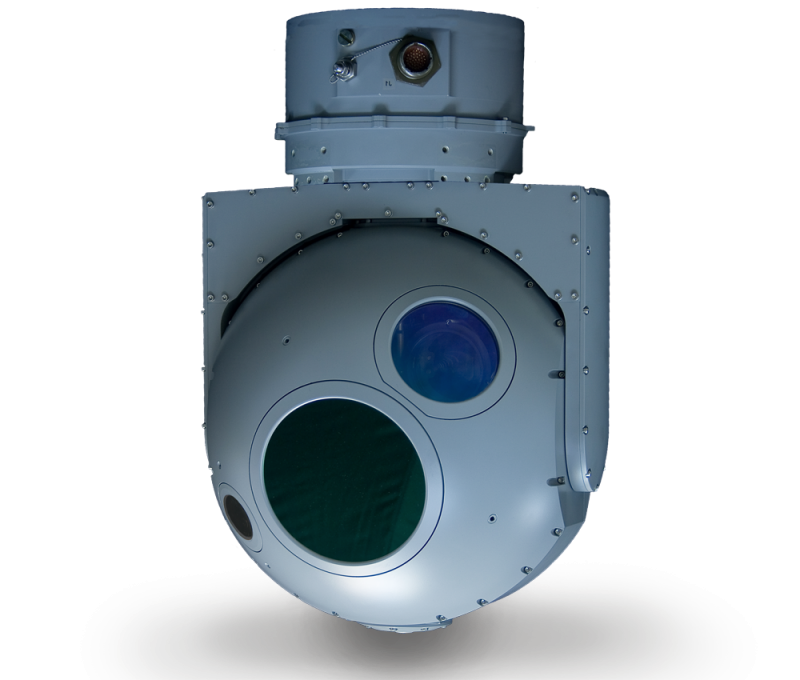
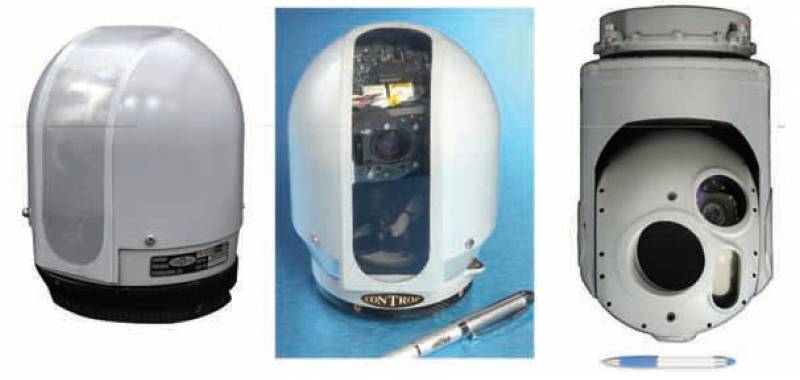
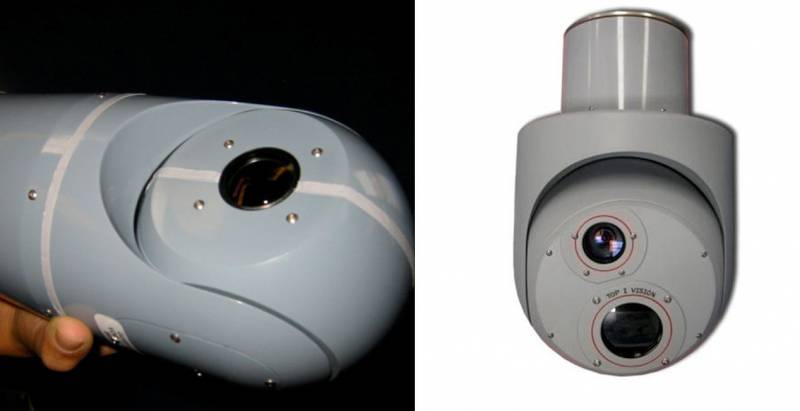
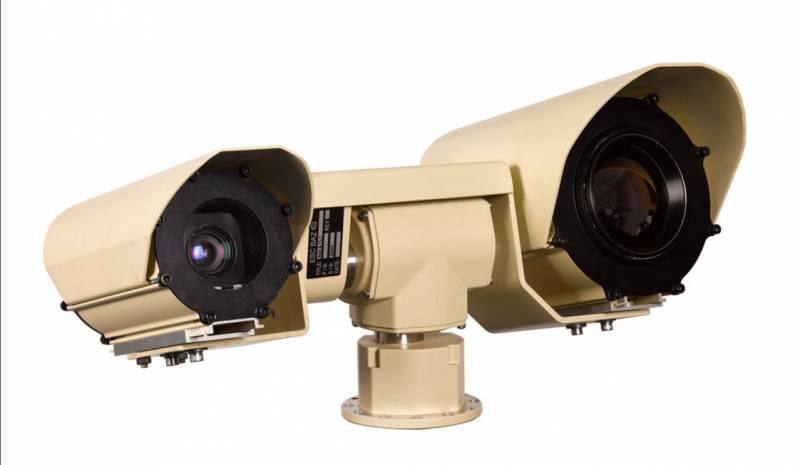

Information